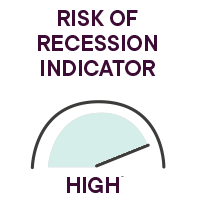Yann Furic
B.B.A., M. Sc., CFA®
Senior Portfolio Manager, Asset Allocation and Alternative Strategies
Global stock markets maintain their upward momentum
The global economy appears to be continuing its gradual recovery, as evidenced by most economic indicators. Stock market indices are also on the rise and have already recovered a good part of the losses caused by the lockdown and the global health crisis.
Focus on the past month

Overview of global equity markets*
- The flagship index of the Canadian stock market, the S&P/TSX, rose 2.3% in August, for a return of -1.1% for the first eight months of 2020.
- In the United States, the S&P 500 gained 4.2% while the Nasdaq climbed 6.7%, bringing their returns for the year to 10.3% and 32.8%, respectively.
- International stock markets were also in positive territory during the month, with the EAFE index advancing 2.3% for a year-to-date return of -3.7%.
- Emerging market equities fell 0.6% in August (+1.2% in 2020) and Chinese stocks rose 2.8% (+20.4% in 2020).
* All the percentages in this section are in Canadian dollars. Bloomberg unless otherwise indicated.
Key events

Pandemic still present
To stem the spread of the virus, most countries and regions of the world have resorted to targeted closures of certain sectors of activity such as tourism, hotels, restaurants and major cultural or sporting events. These restrictions and the health measures advocated by medical authorities have breathed new life into the global economy.
The economic and fiscal support measures that governments have put in place to assist businesses and workers have fortunately helped to maintain a certain level of income during the months of almost complete shutdown of the economy.
In Canada, many of these measures have been extended to ensure continuity. In the United States, though, politicians are having difficulty striking a deal to extend them, which could hamper the recovery.
Central banks form common front to cope with the pandemic
Aware of the persistent repercussions of the health crisis, the major central banks continued their accommodative monetary policies. They even suggest that key rates could remain low until the recovery is well underway in their respective economies. So the risk of a recession remains real and present and cannot be swept aside so easily.
Even the U.S. Federal Reserve (Fed) is prepared to let the inflation rate exceed its projected 2% target before considering changing its benchmark rate, a very clear indication of the importance of the economic recovery at this time.
What about employment?
The news has been good on the employment front for the past few months, and the latest numbers continue to beat expectations.
In the United States, 1.37 million new jobs were created in August 2020, when the forecast was for 1.35 million. As a result, the unemployment rate south of the border fell to 8.4%, a drop of almost 2% from July’s rate of 10.2%.
Although less stellar, Canada’s employment numbers remain very positive. 245,800 Canadians returned to work, versus expectations of 250,000, reducing the country’s unemployment rate to 10.2% from 10.9% in July 2020. (Sources: Statistics Canada and Refinitiv)
Technology in the spotlight
The markets continue to advance, with technology the top-performing sector. The FAAMG stocks (Facebook, Amazon, Apple, Microsoft and Google) continued to lead the way. Their performance drove the indexes higher and increased bullish sentiment on the markets.
As for fixed income, Government of Canada bonds across maturities posted a return of -1.0% in August and have risen 7.0% year to date in 2020. (Source : Canaccord Genuity)

Our strategic monitoring
Main risks
Considering the current environment, we are closely monitoring certain situations.
- The COVID-19 pandemic has resulted in a recession which could turn into an economic depression if a second wave materializes with widespread lockdown measures. In this context, consumer confidence could eventually be undermined, causing a reduction in spending over a long period, which would prolong the recession.
- The trade disputes between the United States and China are still unresolved. As a result of this stalemate, tensions between the two superpowers could escalate and harm the global economy. In addition, the U.S. elections in November are currently generating a lot of uncertainty.
- Another key element is the development of a COVID-19 treatment or vaccine. If their availability is delayed beyond the first quarter of 2021, the health crisis will continue worldwide, which would likely exacerbate market volatility.
Fundamental indicators
Certain economic indicators in August tell us about the progress of global economies.
Low benchmark rates in Europe and the United States ![]()
Rates remain at low levels, which is favourable for an economic recovery.
Global Purchasing Managers’ Index ![]()
Regional indexes are rising, a positive indicator for the global economy.
François Landry
CFA®
Vice-President and Chief Investment Officer
Vice-Chairman of the Board of Directors of Professionals' Financial - Private Management
Our strategies
(6-to-12 month horizon)
We are maintaining a neutral tactical position for now in the FDP Tactical Asset Allocation Private Portfolio, i.e. 55% equities and 45% bonds. The financial markets have gained back the ground lost due to the pandemic faster than we expected.
Investors are generally very bullish and index levels are largely discounting economies returning to normal. We believe that many uncertainties remain and call for vigilance in the short term. A more neutral short-term position seems appropriate to us. However, over a horizon of more than 12 months, we are more optimistic about an overweighting of equities, given the systemic low level of interest rates and the outlook for more sustainable earnings growth in a context of normalization of the health crisis.
The geographic allocation of equities in our portfolios changed little during the past month.
- The underweighting of Canadian equities was reduced, and the weighting of Canadian banking stocks was increased.
- We are maintaining an overweight position in U.S. equities, with increased exposure to technology stocks and industrials. The latter should benefit from an eventual economic recovery and announced infrastructure spending.
- We are maintaining a neutral position on EAFE (Europe, Australasia, Far East) equities due to the fiscal measures implemented in Europe and the reopening of euro zone economies.
- Lastly, we remain neutral on emerging markets in light of heightened tensions between Beijing and Washington, a situation that is expected to last until the U.S. presidential elections in November.
If this article raised questions and you would like further explanations, feel free to contact your advisor.
François Landry, CFA
Vice-President and Chief Investment Officer
Yann Furic, B.B.A., M. Sc., CFA
Senior Portfolio Manager, Asset Allocation and Alternative Strategies
Sources: Bloomberg
The opinions expressed here and on the next page do not necessarily represent the views of Professionals’ Financial. The information contained herein has been obtained from sources deemed reliable, but we do not guarantee the accuracy of this information, and it may be incomplete. The opinions expressed are based upon our analysis and interpretation of this information and are not to be construed as a recommendation. Please consult your Wealth Management Advisor.




















